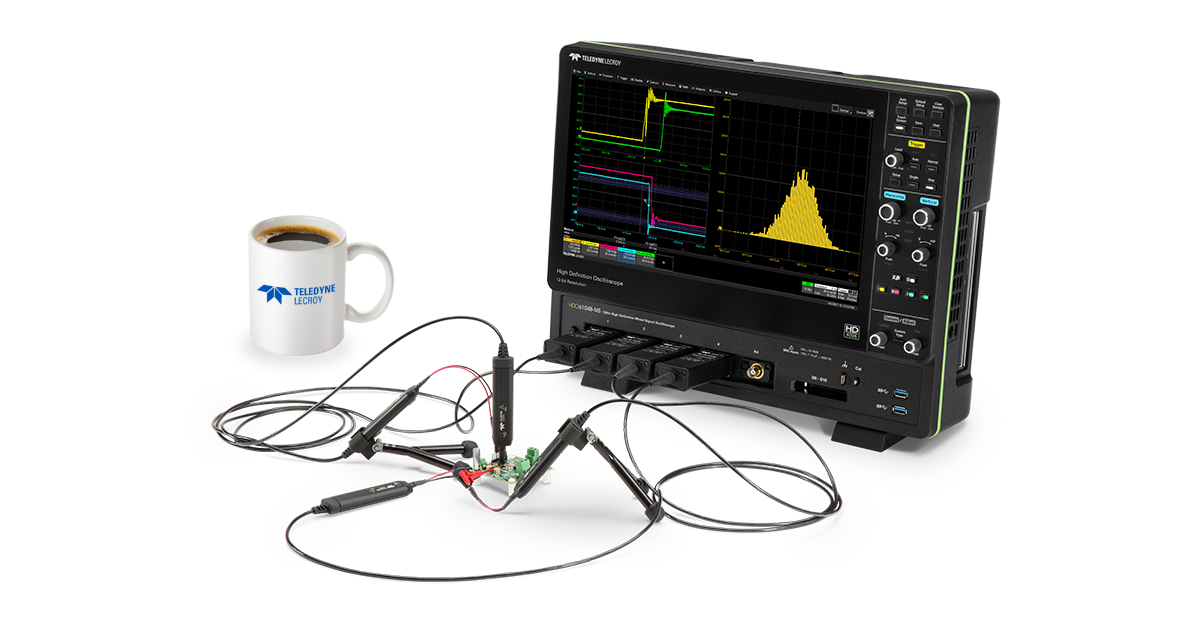
Oscilloscope Coffee Break Webinar Series
Join Teledyne LeCroy for this 30-minute Oscilloscope Coffee Break Series to remind us how to get the most test and debug capability from our oscilloscopes. Grab your refreshment and spend a few minutes with us as we focus on a specific topic each month.
All sessions will be recorded so if you can't attend live, please register anyway, and we will send you the recording and slides afterward. Click here to access the 2021 Oscilloscope Coffee Break webinar sessions.
Part 1: Five Tips to Improve Your Oscilloscope's Resolution and Dynamic Range
Available On-Demand
In this session we recommend five tips and best practices on how to get the best measurement accuracy and performance by using your oscilloscope’s full dynamic range, whether that is 8, 10, or 12 bits of resolution.
Part 2: How to Deskew Your Oscilloscope Probes for Best Accuracy
Available On-Demand
In this session we explain deskewing to eliminate timing errors. Propagation delay differences between your probes and/or channels may affect timing measurement accuracy. Methods to minimize these errors will be described.
Part 3: How to Test Low-speed Serial Data Signal Integrity with Eye Diagrams
Available On-Demand
In this session we describe how to use your oscilloscope to perform quick and simple signal integrity tests on your low-speed serial data signals using eye diagrams.
Part 4: 50 Ω or 1 MΩ Coupling? That is the Question.
Available On-Demand
In this session we explore what oscilloscope input termination is best – 1 MΩ or 50 Ω? When should you use one over the other? What difference does it make?
Part 5: How to Set Up an FFT for Frequency-domain Analysis
Available On-Demand
In this session we describe the insight that can be gained by looking at signal captures in the spectral rather than time domain using your oscilloscope.
Part 6: How to Use Statistical Data and Histograms in Your Oscilloscope
Available On-Demand
In this session, we describe how to to quickly identify circuit issues through the oscilloscope’s measurements, measurement statistics and statistical measurement distributions (histograms).
Part 7: How to Use Oscilloscope Track or Time Trends for Debugging
Available On-Demand
In this session, we describe how to to use an oscilloscope’s measurements and track or time trend functions to quickly identify circuit issues and unexpected signal behaviors.
Part 8: How to Use an Oscilloscope as a Serial Digital-to-Analog Converter (DAC) for Validation and Debug
Available On-Demand
In this session we describe how to use your oscilloscope to extract analog data values from serial data digital messages for the purposes of validating and debugging digital data transmissions.
Part 9: How to Use an Oscilloscope to Confirm Pulse-width Modulation (PWM) Envelopes
Available On-Demand
In this session we describe how to use your oscilloscope to monitor PWM signals and demodulate them to display modulation envelopes, which can be compared to control system inputs and system operation expectations.
Part 10: Zooming With an Oscilloscope – Zoom Waveforms and Timebase Adjustment
Available On-Demand
In this session we describe how to view timing details of your acquired signals through the use of both horizontal zoom controls and changes to timebase and delay settings. We will compare and contrast the two methods.
Part 11: Using Oscilloscope Digital Filters to Remove Undesirable Signal Components
Available On-Demand
In this session we describe how to remove undesirable signal components in oscilloscope acquired signals through the use of digital filters.
Part 12: Using Oscilloscope Pass/Fail Analysis for Productive Validation and Debug
Available On-Demand
In this session we describe how to test signals against a set of qualifying measurement conditions to establish either a “Pass” or “Fail” result.
Access other Years
2021 Oscilloscope Coffee Break Webinars